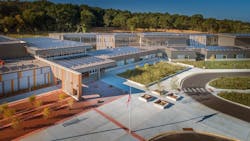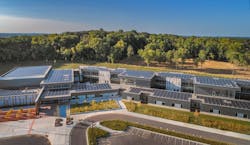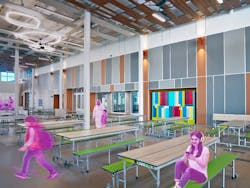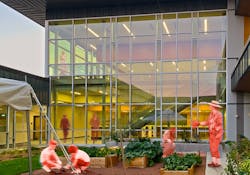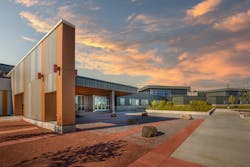Forest Edge Elementary School becomes the largest net zero verified education project in the U.S.
Forest Edge Elementary School in Fitchburg, Wis., has become the largest net zero verified education project in the United States. The 126,600-sf project features 1,700 solar panels, 90 geothermal wells, and an energy-maximizing design.
The solar panels are on the building’s roof and, after one year in operation, the panels have provided all the power the school needs to operate. The rooftop solar panels produce 646 kW of energy in one year and offset CO2 emissions equivalent to 623,249 pounds of coal burned. In addition to being energy-efficient, the school’s design connects students to the natural environment and leverages its unique features as a teaching tool.
Bray Architects, the architect for the project, teamed with HGA and J.H. Findorff & Son to complete the project.
Each section of the school is themed to highlight natural energy sources: Life, Light, Thermal, and Wind. Viewing areas in the building offer views of the solar panels, vegetated roofs, and geothermal pumps. The library is designed as a “nest” that faces toward the forest adjacent to the school, immersing the students in nature while indoors.
According to New Buildings Institute data, as of Oct 1, Forest Edge is:
- The largest verified net zero education facility in the U.S.
- The first net zero verified elementary school in the Midwest/Great Plains region
- The first net zero school in Wisconsin
- One of only 74 net zero verified public projects in the U.S.
